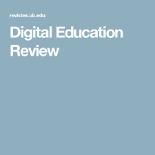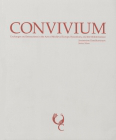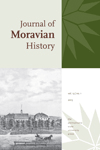
International Journal of Humanities and Arts Computing-A Journal of Digital Humanities
Scope & Guideline
Unveiling New Dimensions of Art and Humanities in a Digital World
Introduction
Aims and Scopes
- Digital Pedagogy:
The journal emphasizes the development and exploration of digital pedagogical techniques, particularly in the context of teaching humanities subjects. This includes case studies on how digital tools can enhance learning experiences in various disciplines. - Digital Archives and Preservation:
A significant focus is placed on the creation and utilization of digital archives, which serve as resources for remembrance and research. The journal promotes projects that develop digital archives and methodologies for preserving cultural heritage. - Textual Analysis and Digital Humanities Methods:
The journal showcases research that employs computational methods such as text mining, named entity recognition, and digital editing to analyze literary and historical texts, reflecting a methodological expansion in the humanities. - Interdisciplinary Approaches:
The journal encourages interdisciplinary research that combines insights from various fields to address complex questions in the humanities, often integrating perspectives from computer science, linguistics, and cultural studies. - Crisis Response in Humanities:
Recent publications highlight the role of digital humanities in responding to crises, such as educational disruptions caused by the pandemic, showcasing adaptive strategies in teaching and research.
Trending and Emerging
- Impact of Artificial Intelligence on Humanities:
Recent publications, especially those discussing AI's role in education and research, indicate a growing interest in how AI technologies can enhance and transform humanities scholarship. - Collaborative and Community-Based Digital Projects:
There is a rising trend towards collaborative digital projects that engage communities in the humanities, reflecting a shift towards inclusivity and participatory research methodologies. - Global Perspectives in Digital Humanities:
The emergence of studies focused on the digital humanities in non-Western contexts, particularly in Africa and Asia, suggests an expanding global perspective that values diverse cultural narratives and methodologies. - Data-Driven Approaches in Humanities Research:
The journal is increasingly featuring papers that utilize data-driven methods, such as machine learning and data visualization, to explore literary texts and historical data, indicating a methodological evolution in the field. - Resilience and Adaptation in Humanities Education:
Research addressing the adaptation of humanities education in response to crises, such as the COVID-19 pandemic, highlights an emphasis on resilience and innovative teaching practices.
Declining or Waning
- Traditional Humanities Scholarship:
There is a noticeable decline in papers focused solely on traditional humanities scholarship without a digital component. This indicates a shift towards integrating digital methods and tools in humanities research. - Static Historical Analysis:
Research that does not incorporate interactive or dynamic methodologies is becoming less frequent. The trend suggests a preference for studies that engage with data visualization or digital representation of historical narratives. - Regional Studies with Limited Digital Application:
Papers focusing on regional studies that do not leverage digital tools or frameworks are appearing less frequently. This reflects a broader movement towards global perspectives that utilize digital humanities methodologies.
Similar Journals

Artnodes
Unleashing Creativity in a Digital AgeArtnodes is a prominent academic journal published by UNIV OBERTA CATALUNYA, making significant contributions to the interdisciplinary fields of Arts and Humanities, Cultural Studies, and Computer Science. With an ISSN of 1695-5951 and an E-ISSN of 1695-5951, this Open Access journal has been accessible to the global community since 2002, encouraging the dissemination of innovative research and artistic exploration. Distributed from its headquarters in Barcelona, Spain, Artnodes has established itself as a vital resource, particularly in the domains categorized under Visual Arts, Performing Arts, and Literature, boasting a Q1 ranking in several areas for 2023. The journal is also noted for its impact in computer graphics and design, highlighting the integration of technology and art. With an impressive Scopus rank of #134 in Visual Arts and Performing Arts, this journal remains a critical forum for scholars and practitioners alike, facilitating dialogue and advancing knowledge across disciplines.

Digital Education Review
Shaping the Future of Education with Digital InsightsDigital Education Review, published by the University of Barcelona, stands at the forefront of the Digital and Educational Technology field, offering a valuable platform for researchers, educators, and policymakers since its inception as an Open Access journal in 2010. With an emphasis on innovative practices and critical evaluations in digital education, the journal has garnered an impressive standing within the academic community, achieving rankings of Q3 in Computer Science Applications and Q2 in Education for 2023, alongside a notable position in the 71st percentile of Social Sciences - Education rank (447 out of 1543). The journal aims to foster interdisciplinary dialogue and disseminate research that influences educational transformation through digital means. Based in Spain, the Digital Education Review not only promotes high-quality research but also engages with a global audience, making it a pivotal resource for those dedicated to advancing the understanding of digital educational practices.

Anales de Documentacion
Connecting Scholars to the Future of Information ManagementAnales de Documentacion is a distinguished open-access journal published by UNIV MURCIA, contributing significantly to the field of Library and Information Sciences since its inception in 1998. With a focus on the dissemination of innovative research and studies, this journal serves as a vital resource for researchers, professionals, and students engaged in the dynamic landscape of documentation and information management. Although coverage in Scopus was discontinued from 2013 to 2020, the journal continues to hold its place in the academic community, ranking #167 out of 227 in the Social Sciences category, reflecting its commitment to quality and relevance. The journal's accessibility enhances its utility, making vital research available to a broad audience, thereby fostering collaboration and scholarly exchange in the evolving discourse of information sciences. Its address at the Edificio Pleiades on the Campus de Espinardo in Murcia, Spain, further signifies its role as a central hub for academic inquiry and exploration in this essential field.

Convivium-Exchanges and Interactions in the Arts of Medieval Europe Byzantium and the Mediterranean
Navigating the Cultural Currents of Medieval Europe and BeyondConvivium - Exchanges and Interactions in the Arts of Medieval Europe Byzantium and the Mediterranean, published by Masarykova University, is a dedicated platform for scholarly discourse in the fields of Classics, History, and the Visual Arts and Performing Arts. Since its inception in 2017, this journal has aimed to enrich our understanding of the intricate cultural interconnections between medieval Europe, Byzantium, and the Mediterranean region, standing as an important resource for researchers, professionals, and students alike. While the journal is published in an open-access format, enabling wider dissemination of knowledge, it currently holds a respectable Q3 quartile ranking across its categories in 2023, reflecting its increasing reputation in the academic community. Although the journal is based in Belgium, its scholarly reach is truly international, as evidenced by its varied contributions. Engage with Convivium to explore the rich tapestry of medieval art and thought, and contribute to the ongoing dialogue about our shared cultural heritage.

Pixel-Bit- Revista de Medios y Educacion
Exploring Innovative Practices in Digital LearningPixel-Bit: Revista de Medios y Educación is an esteemed academic journal published by UNIV SEVILLA, EDITORIAL, dedicated to advancing the fields of media and education through rigorous research and insightful analysis. With its Open Access policy established in 2010, the journal ensures that the latest findings and methodologies are readily accessible to researchers, professionals, and students worldwide. Operating from Seville, Spain, Pixel-Bit has been recognized for its significant impact within its respective fields, achieving Q2 and Q3 rankings in multiple categories such as Computer Networks and Communications, Computer Science Applications, Education, and Information Systems as of 2023. Its Scopus rankings further reflect its influence, with notable placements in the 83rd percentile in Social Sciences - Education. This journal serves as a pivotal platform for disseminating knowledge, fostering innovative practices, and bridging the gap between technology and pedagogy in an increasingly digital world.

Zivot Umjetnosti
Connecting researchers and practitioners in the arts.Zivot Umjetnosti, published by the INST POVIJEST UMJETNOSTI - INST ART HISTORY, is a notable Croatian journal that serves as a platform for scholarly discourse in the fields of visual arts, performing arts, and museology. With its inception in 2008, the journal has continued to provide a voice for researchers and practitioners alike, contributing significantly to ongoing conversations in the arts. Despite its current Q4 rank in both Visual Arts and Museology categories—placing it within the 21st and 17th percentiles, respectively—Zivot Umjetnosti is recognized for its commitment to advancing knowledge and fostering critical dialogue. The journal aims to bridge theoretical frameworks with practical applications, making it an invaluable resource for academics, curators, and students engaged in artistic research. While currently operating under traditional access options, Zivot Umjetnosti remains a fundamental publication for those wishing to explore and expand their understanding of the dynamic intersection of art and culture in Croatia and beyond.

Journal of Moravian History
Fostering Understanding of a Unique Cultural HeritageWelcome to the Journal of Moravian History, a prominent academic periodical published by Penn State University Press. With a focus on the intricate tapestry of Moravian history and its religious dimensions, this journal caters to scholars, historians, and students who seek to deepen their understanding of this unique cultural heritage. Having converged from 2014 to 2023, the journal has established itself within the Q4 category in both History and Religious Studies, as recognized in the 2023 assessments, and it ranks respectively in the 60th percentile for Religious Studies and 58th percentile for History in Scopus evaluations. While the journal is not open access, it provides valuable insights and rigorous research that enriches the academic dialogue surrounding Moravian studies. With a commitment to advancing scholarship and fostering a greater appreciation for this influential community, the Journal of Moravian History remains an essential resource for those passionate about historical and religious analysis.

Manuscript Studies-A Journal of the Schoenberg Institute for Manuscript Studies
Connecting Scholars through Manuscript InsightsManuscript Studies: A Journal of the Schoenberg Institute for Manuscript Studies, published by University of Pennsylvania Press, serves as a pivotal resource in the intertwined fields of conservation, library sciences, and literature. With an ISSN of 2381-5329 and an E-ISSN of 2380-1190, the journal has been actively contributing to academic discourse since its inception in 2016 and continues to resonate through 2024. The journal is categorized in the Q3 quartiles for Conservation and Library and Information Sciences, and Q2 for Literature and Literary Theory, reflecting its relevance and credibility within these disciplines. While it is not an open-access journal, its vital scholarship is crucial for researchers and professionals dedicated to the preservation and interpretation of manuscripts. Positioned within the competitive arenas of Scopus rankings, Manuscript Studies highlights significant contributions to the understanding of manuscript collections, offering interdisciplinary perspectives that are essential for students and scholars alike. Whether delving into the complexities of textual transmission or exploring methodologies in manuscript conservation, Manuscript Studies remains an invaluable platform for advancing knowledge and fostering dialogue in the study of manuscripts.

Etic net-Revista Cientifica Electronica de Educacion y Comunicacion en la Sociedad del Conocimiento
Advancing Open Access for All in Knowledge SocietyEtic net-Revista Cientifica Electronica de Educacion y Comunicacion en la Sociedad del Conocimiento, published by UNIV GRANADA, is a pioneering open-access journal dedicated to the exploration and dissemination of research in the fields of education and communication within the context of knowledge society. Since its inception in 2002, this journal has provided a platform for scholars, researchers, and practitioners to share innovative ideas and empirical studies, fostering critical dialogue and collaboration in the rapidly evolving landscape of digital education and communication. With its ISSN 1695-324X, Etic net aims to bridge theoretical frameworks and practical applications, contributing significantly to the scholarly discourse and practices that shape contemporary educational experiences globally. Through its commitment to open access, the journal ensures that high-quality research is freely available to all, promoting inclusivity and accessibility in academic publishing. We invite you to explore the latest findings and contribute to shaping the future of education and communication by engaging with this essential resource.

Open Library of Humanities
Bridging Disciplines to Enrich Human ExperienceThe Open Library of Humanities, a premier platform established in 2015 and based in the United Kingdom, elevates the discourse in the fields of Anthropology, Arts and Humanities, Cultural Studies, and Sociology and Political Science. Published by OPEN LIBRARY OF HUMANITIES, this open access journal provides a prominently accessible space for scholars and researchers to disseminate their findings and contribute to a diverse range of academic conversations. With an impressive Scopus ranking that reflects its influence—ranking in the 87th percentile in General Arts and Humanities and in the 80th percentile for Cultural Studies—the journal is recognized for publishing high-quality research that addresses significant and contemporary issues within its scope. By embracing a multidisciplinary approach, the Open Library of Humanities fosters interdisciplinary dialogue and encourages innovative research dissemination practices. Scholars, students, and practitioners are invited to engage with the latest developments and theoretical insights that enrich our understanding of the human experience.